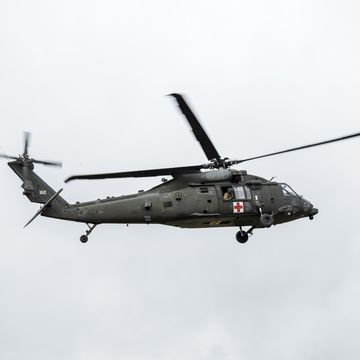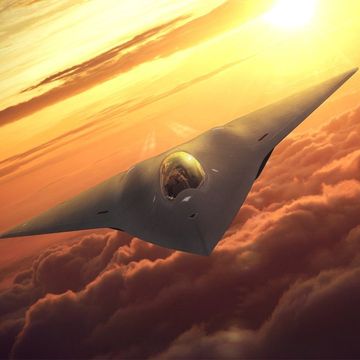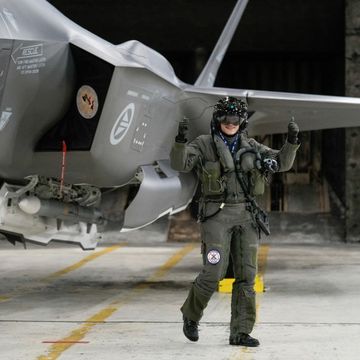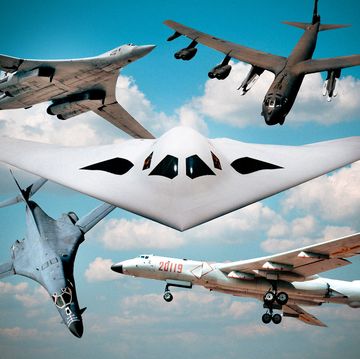The Royal Navy is currently testing a landing system that will allow its F-35B Joint Strike Fighters to fly farther and with greater payloads. The shipborne rolling vertical landing will allow F-35Bs to land on the U.K.’s new carriers with larger payloads, eliminating the need to jettison expensive stores just to land on ships.
The U.K.’s newest aircraft carrier, HMS Queen Elizabeth, has spent the better part of a month off the U.S. East Coast practicing takeoffs and landings with F-35B fighter jets. Queen Elizabeth and her sister ship, HMS Prince of Wales, each will embark 12 to 36 F-35Bs at a time, forming the tip of the spear of British expeditionary forces. The 65,000 ships are the largest warships ever built in the U.K.
One odd feature (or lack thereof) on the two carriers is the absence of aircraft catapults and arresting gear. The carrier uses ski ramps to boost F35s into the air. As for landing without the presence of arresting gear, the F35s will use a technique called shipboard rolling vertical landings.
Unlike US Marine Corps F-35Bs, which hover over the flight decks of amphibious assault ships and then descend vertically to a landing, the Royal Navy’s F-35Bs will approach the rear flight decks of the Queen Elizabeth class in a slow descent, their exhaust nozzles straight down, touching down on the flight deck and then quickly coming to a direct stop.
The process, as the video shows above, looks a lot like a landing on U.S. carrier in slow motion. Shipboard rolling vertical landings also have the benefit of allowing F35Bs to land with more fuel and ordnance onboard: vertical landings have weight restrictions, as the jet must generate just enough thrust to gradually lower the jet straight down. Rolling vertical landings are similar but use the jet’s wing lift to support greater landing weights. A typical F-35B using vertical landings can return to the boat with 5,000 pounds of stores. A F-35B using a rolling vertical landing can return with 7,000 pounds of stores. Once the plane is on the flight deck, it is moving slowly enough to for the wheel brakes to bring the aircraft to a complete stop.
The technique means that British F-35Bs can land carrying more fuel and weapons. U.S. Marine Corps F-35Bs do not use this landing technique, likely because the flight decks on Wasp and America-class amphibious assault ships are not long enough or too crowded to support a rolling landing. Marine F-35s are scheduled to accompany Queen Elizabeth on future cruises, so their jets and crews will also eventually learn to master this landing trick.
Shipboard rolling vertical landings roast the rear of a carrier’s flight deck, as the F-35B approaches with its exhaust nozzle pointed straight down.Queen Elizabeth’s rear flight deck is treated with a thermoresistant coating to cope with the hot exhaust blast.

Kyle Mizokami is a writer on defense and security issues and has been at Popular Mechanics since 2015. If it involves explosions or projectiles, he's generally in favor of it. Kyle’s articles have appeared at The Daily Beast, U.S. Naval Institute News, The Diplomat, Foreign Policy, Combat Aircraft Monthly, VICE News, and others. He lives in San Francisco.













